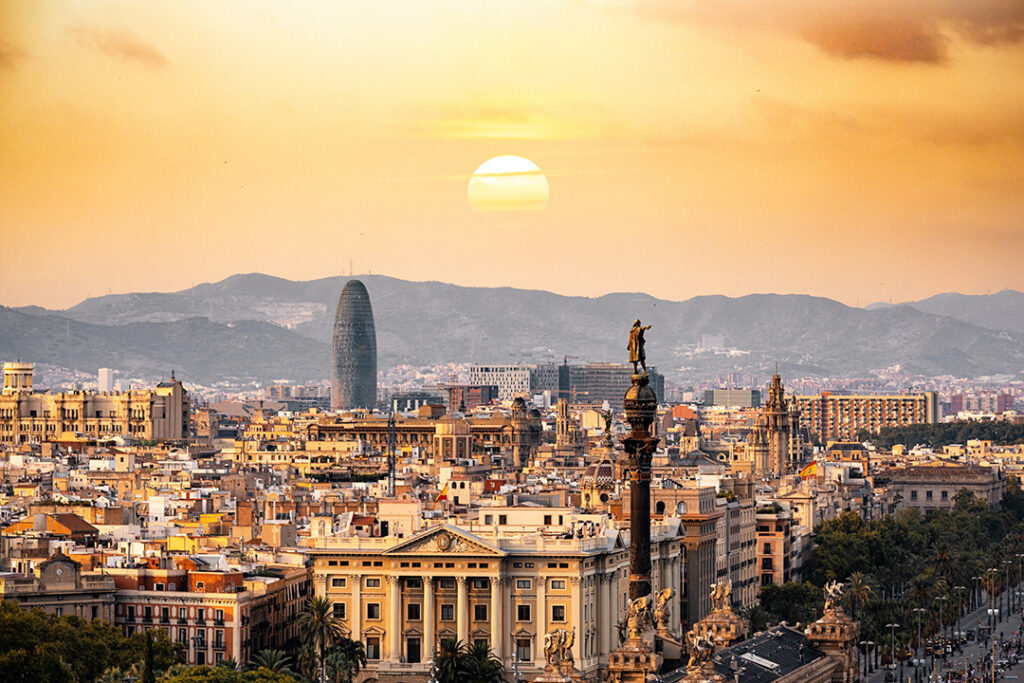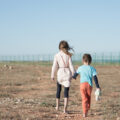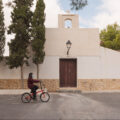The Church in an “emptied Spain”
The Church in an “emptied Spain”
Spain’s rural communities are disappearing, and with them their churches and congregations. But could migration provide a solution?
During his papal trip to Kazakhstan, Pope Francis spoke to the media about the need to welcome migrants, something he said the West had “forgotten” how to do. In particular, the pontiff said he was struck by how there could be such intolerance to new arrivals when in Italy and Spain there are “empty towns with just 20 old people living in them,” something which migration could help solve.[1]
For the Spanish Catholic Church, Francis’s comments were a reaffirmation of the problem their rural parishes face, whilst at the same time an endorsement of a new set of policies to help combat them.
Emptied Spain
Spain is Europe’s most densely populated country, a fact that seems surprising given its size. However, this fact is a product of a rapid process of urbanisation that took place in the mid-20th century. Today, just 16% of Spaniards live in rural areas. Whilst the overall population of Spain has increased by 10 million since 1975, rural provinces have actually seen major declines in population, one example being Zamora, which has had a 31% population decrease since 1975.[2] [3]
This demographic shift has been an important feature in creating modern Spain, but in recent years has gained greater political attention due to the emergence of the concept of España Vaciada (Emptied Spain). España Vaciada not only describes the absence of people in much of Spain’s rural interior, but also a political sense that these regions have not received economic support and have, in effect, been abandoned by the central state.[4]
These frustrations led to the emergence of a series of local political parties which in September 2021 joined together under the umbrella party España Vaciada. Although not always aligned in all policies, these groups have worked together to campaign against the neglect of their regions by politicians and call for greater investment to prevent even further depopulation.[5]
An intertwined future
Since their unification into the España Vaciada platform, negotiations between the central government and the rural organisations have often been marked by tensions, and ultimately a failure to achieve agreements or consensus. In an interview with Alfa y Omega, Fernando Pulido, one of the coordinators of the platform, explained that as soon as España Vaciada started gaining media attention, the federal government became more reluctant to empower them and stepped away from negotiations.[6]
Pulido contrasts this reluctance from the state to engage with the problems facing rural communities with the “closeness” and “awareness” of the Catholic Church of these issues. He goes on to explain that whenever the platform or local organisations have asked the Church for support, it has come in a “decided and immediate” way. [7]
The Church’s support for España Vaciada demonstrates not only the centrality of the institution to rural communities, but also the recognition that the Church itself is threatened by the same problems of an ageing population and a lack of resources.
The first of these points, regarding the continued social role of the Church, is demonstrated in the agreement of the Church to participate in a national protest led by España Vaciada, in which churches rang their bells in towns and villages, calling for residents to attend the local square to listen to the reading of the movement’s policies.[8] The second, about the long-term risk, is made clear in an article by the religious broadcaster COPE which visited a village in rural Aragón with a population of just 100 people. With the priest of the local parish in his 80s, like many of his congregants, locals fear for the future of the church in their area once he retires. [9]
Revitalisation from overseas
This dilemma leads us to the question of how the Church can find ways to both sustain the life of their rural communities, as well as their own institutions within them.
One answer has come via a scheme which has run since the 1990s. It aims to tackle the fact that whilst Spain has 22,293 parishes, it has just 16,960 priests. Although this gap may sound dramatic, it is actually a significant improvement since the 90s, partly because in this period, the Spanish Church opened its doors to Catholic priests from other parts of the world. It is currently estimated that there are 1,500 foreign priests working in Spain, coming from 70 different countries. An article in El Español spoke with a number of these priests, coming from countries such as Congo, Indonesia, and various parts of Latin America. Many of these priests have moved to rural areas which were previously lacking enough priests to serve all of their parishes.[10]
However, solely ensuring that the Church has representation will not help to resolve the challenge of depopulation more generally. Therefore, the Church has also pushed forward a scheme that helps it to unite two of its most important campaigns: reviving Spain’s rural communities and providing a home to migrants fleeing war and persecution across the world.
This scheme, called the Mesa del Mundo Rural (The General Committee of the Rural World), was launched by the Department of Migrations of the Episcopal Conference at the start of 2022, with the aim of “joining together the hospitality for migrants with the revitalisation of the towns and villages.”[11]
To do this, the Church has helped migrants, such as Edgardo Josué Juárez and his family, to move to parts of rural Spain and set up their lives. Juárez fled persecution in Honduras in 2016, and has been helped by the Church to take over a bar in the village of Gallocanta, in the province of Zaragoza. The report in Religion Digital says that both the family and the residents are delighted with how the scheme has helped, and there are plans to increase the scale of the programme in the future.[12]
As the Mesa del Mundo Rural approaches its first-year anniversary, it remains to be seen to what extent it can make a noticeable difference in reversing Spain’s depopulation trend. However, it is clear that the programme offers a means for the Church to unite both its demand for a warm welcome for migrants fleeing wars and persecution, and its desire to revitalise the rural communities in which it has so long had an important presence.
Interested in similar topics? Go to our Dashboard to learn more.
Sources
[1] El papa propone una solución para la España vaciada: “Hay pueblos con solo 20 viejecitos”
[2] La población rural cae un 10% desde el año 2000
[3] La España vacía: despoblación en España, datos y estadísticas
[4] ¿Qué es la España Vaciada? 23 provincias y un cuarto del Congreso
[5] La España vaciada se siente respaldada por la Iglesia – Alfa y Omega
[6] La España vaciada se siente respaldada por la Iglesia – Alfa y Omega
[7] La España vaciada se siente respaldada por la Iglesia – Alfa y Omega
[8] La Iglesia española muestra su compromiso con el mundo rural a través de una nueva iniciativa (eldebate.com)
[9] La radiografía de la Iglesia en la España vaciada – Iglesia Española – COPE
[10] España ya tiene 1.500 curas extranjeros contra la crisis de fe: Juan desde el Congo o Álvaro de Managua
[11] La Mesa del Mundo Rural, que une la acogida y revitalización de los pueblos, continúa dando sus frutos
[12] La Mesa del Mundo Rural, que une la acogida y revitalización de los pueblos, continúa dando sus frutos






